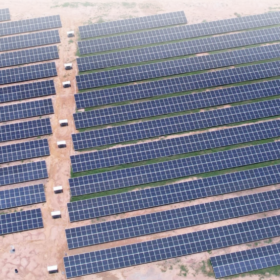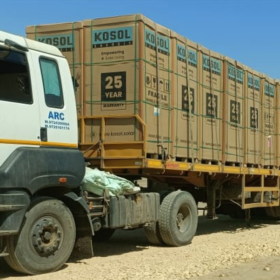As we commemorate World Environment Day, it’s fitting to reflect on India’s ambitious journey in the solar energy sector. With its commitment to sustainable development and combating climate change, India has set its sights on becoming a global solar powerhouse. However, the path to this green future is paved with both formidable challenges and promising opportunities.
India’s geographical advantage is undeniable. Blessed with about 300 sunny days annually and an average solar radiation of 4-7 kWh/m²/day, India’s solar potential is among the highest globally. To put this into perspective, if just 1% of India’s land area were covered with solar panels at 15% efficiency, it could generate over 1,000 GW of power.
This natural bounty, coupled with plummeting solar panel costs, has propelled India’s solar capacity from a mere 2.8 GW in 2014 to an impressive 82.6 GW till April 2024 with the highest annual installation of 15 GW achieved in 2023-24 Furthermore, the Union Budget significant allocation to renewable energy projects underscores the country’s commitment to harnessing its solar potential.
Challenges on the horizon
Despite this rapid growth, significant hurdles remain.
Land acquisition and grid integration: Solar farms require vast tracts of land. In a densely populated country where agriculture dominates, acquiring suitable land without displacing communities or compromising food security is a delicate balancing act. This is particularly challenging in states with high population density and fertile agricultural land. Additionally, India’s ageing power grid struggles to handle the intermittent nature of solar energy.
Modernizing and expanding the grid to accommodate increasing solar capacity is a costly and complex task. The variability of solar power necessitates advanced grid management techniques and significant investment in infrastructure.
Manufacturing dependencies and financial constraints: Despite the “Make in India” initiative, most solar equipment is imported, particularly from China. This not only widens the trade deficit but also poses supply chain risks, as seen during the COVID-19 pandemic.
Building a robust domestic manufacturing sector for solar components is crucial for long-term sustainability. Moreover, high upfront costs and perceived risks make financing solar projects challenging. Many distribution companies (DISCOMs), burdened by debt, struggle to pay for solar power, deterring investors. Access to affordable finance remains a significant barrier for large-scale solar deployment.
Water scarcity: Solar panels need regular cleaning to maintain efficiency. In water-stressed regions, this creates a dilemma: green energy versus water conservation. Developing water-efficient cleaning technologies is essential to address this issue.
Opportunities abound
Yet, for every challenge, there’s an opportunity:
Rooftop solar: With over 300 million buildings, India’s rooftop solar potential is vast. It sidesteps land issues, empowers consumers as ‘prosumers’ (producer-consumers), and reduces transmission losses. Expanding rooftop solar installations can significantly contribute to the overall solar capacity.
Solar-wind hybrids: Combining solar and wind power can provide more consistent energy, making better use of grid infrastructure. India’s diverse geography is perfect for such hybrid projects, which can enhance grid stability and maximize resource utilization.
Green hydrogen: Using solar power to produce hydrogen—a clean fuel—can revolutionize sectors like steel, cement, and heavy transport. India’s abundant solar resources make it a potential green hydrogen hub. This can diversify energy sources and reduce dependence on fossil fuels.
Agrivoltaics: This innovative approach allows solar panels and crops to coexist, providing shade for plants while generating power. It could be a game-changer in reconciling solar expansion with agricultural needs, especially in rural areas where land use is a critical issue.
Energy storage: As battery technology advances and costs fall, large-scale storage can solve solar’s intermittency issue. India’s growing electric vehicle market also synergizes well with solar charging infrastructure. Enhancing energy storage capabilities can ensure a reliable supply of solar energy even during non-sunny periods.
Policy push and innovation
The government’s role is pivotal. Schemes like PM-KUSUM support farmers in installing solar pumps and leasing land for solar projects. The recent Production-Linked Incentive (PLI) scheme aims to boost domestic manufacturing of solar equipment. Furthermore, India’s ISA (International Solar Alliance) initiative fosters global cooperation in solar R&D and financing.
Innovation is equally crucial. Indian startups are pioneering solutions like solar tiles, transparent solar glass, and AI-driven panel cleaning drones. The Indian Institute of Technology (IIT) Madras has developed low-cost, high-efficiency solar cells using N-type Czochralski silicon wafers. Such homegrown technologies could propel India to the solar industry’s forefront.
Future prospects
By 2030, solar energy could meet 30% of India’s electricity demand, creating millions of jobs and saving billions in fossil fuel imports. Beyond numbers, solar power symbolizes India’s commitment to its Paris Agreement pledges and its vision of “Vasudhaiva Kutumbakam” (the world is one family) in the fight against global warming. The transition to a solar-powered future promises not only economic benefits but also significant environmental and social impacts.
As we stand at this environmental crossroads, India’s solar journey offers a compelling narrative. It’s a tale of turning challenges into opportunities, of harnessing the sun’s boundless energy to light up lives sustainably. On this World Environment Day, India’s solar saga reminds us that with innovation, policy support, and collective will, we can indeed craft a brighter, greener future—one solar panel at a time.
The continued focus on solar energy aligns with global sustainability goals and positions India as a leader in the renewable energy sector. As the world grapples with the urgent need to combat climate change, India’s solar energy sector stands as a beacon of hope and a testament to the power of sustainable innovation.
Conclusion
India’s solar journey is a testament to its commitment to sustainable development and combating climate change. Despite the challenges of land acquisition, grid integration, manufacturing dependencies, financial constraints, and water scarcity, the opportunities in rooftop solar, solar-wind hybrids, green hydrogen, agrivoltaics, and energy storage are vast. With robust policy support, continued innovation, and a collective will, India is well on its way to becoming a global solar powerhouse.
On this World Environment Day, let us celebrate India’s solar achievements and look forward to a future powered by the sun, where sustainable energy lights up every corner of the country and beyond.
The views and opinions expressed in this article are the author’s own, and do not necessarily reflect those held by pv magazine.
This content is protected by copyright and may not be reused. If you want to cooperate with us and would like to reuse some of our content, please contact: editors@pv-magazine.com.








2 comments
By submitting this form you agree to pv magazine using your data for the purposes of publishing your comment.
Your personal data will only be disclosed or otherwise transmitted to third parties for the purposes of spam filtering or if this is necessary for technical maintenance of the website. Any other transfer to third parties will not take place unless this is justified on the basis of applicable data protection regulations or if pv magazine is legally obliged to do so.
You may revoke this consent at any time with effect for the future, in which case your personal data will be deleted immediately. Otherwise, your data will be deleted if pv magazine has processed your request or the purpose of data storage is fulfilled.
Further information on data privacy can be found in our Data Protection Policy.